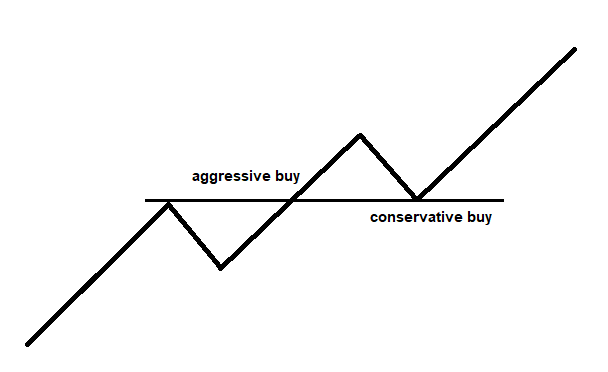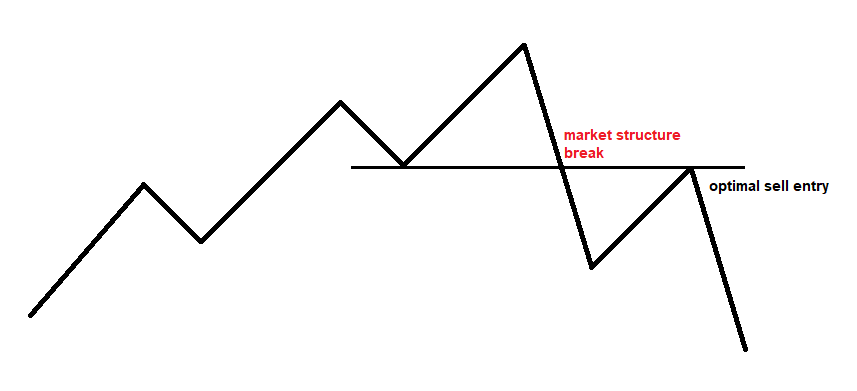Have you ever felt overwhelmed by the complexity of the forex market structure? Understanding how to read and interpret market dynamics is crucial for successful trading. If you're struggling to make sense of it all, you're not alone.
To excel in forex trading, it is essential to decipher the underlying structure of the market. By dissecting price movements, identifying key levels, and understanding market participants' behaviors, you can enhance your trading acumen significantly. This article will guide you through the fundamentals of reading forex market structure, empowering you to navigate the complexities of the market with confidence.
What is Forex Market Structure?
Forex market structure is the framework created by buying and selling a currency pair within a specific timeframe and a defined time period.
The foreign exchange market structure analysis aims to determine the market's current state, which belongs to one of three categories: bullish trend, bearish trend or sideways movement.
Although most markets spend the most in a sideways movement, this doesn’t mean those periods cannot be as profitable as a bullish or bearish trend. Defining the market structure, particularly on a higher time frame, helps to identify the best strategy approach at that time.
Learn More From with Trade with Pat
Source: TWP
How Does Forex Market Structure Work?
Different approaches explain foreign exchange market structure, including trendlines, supply and demand zones, candlestick patterns or advanced harmonic patterns.
However, the simplest way is usually the most reliable one. Identifying strong support and resistance levels and swing high–swing low formations gives enough data to define the forex market structure.
Traders can use market structure in different ways. Still, the most common one is to stack the odds in their favor by forex trading with the established trend. The simplest way is to define the market structure on a higher timeframe and then look for opportunities on a lower time frame.
Many traders succeed in waiting for pullbacks on a lower time frame and then trading with the trend. As short-term contrarians but long-term trend followers, they can set trades with favorable risk-to-reward ratios in the forex market.
Forex Market Structure Stages
At any point and on any timeframe, the FX market can be in one of three stages — trending upwards, trending downwards or moving sideways.
An upward trend is also called a bullish trend. Its main characteristic is a series of higher highs and higher lows. Ideally, the price moves upwards in an orderly manner, pulling back after establishing a new high but never fully retracing or making a lower high or a lower low. Retail traders consider these retracements as buying opportunities to ride the trend.
A downward trend is also known as a bearish trend. Its characteristic is a series of lower lows and lower highs — where the price pulls back upwards but never goes beyond the previous high. Ideally, it also never makes a higher low. It is the opposite of the bullish trends, and in this trend, traders now prefer selling opportunities.
Sideway movement is a bit trickier. Although often defined by a range of equal highs and equal lows, it can also have an expansion with higher highs and lower lows. The bottom line is that it’s a period of indecisiveness, resulting in no clear consensus on the prevailing trend.
How to Trade Market Structure in Forex
When analyzing the market structure to formulate a trading setup, traders have two options — expecting more of the same or anticipating a reversal.
Expecting more of the same is a simpler option because the market operates within an established framework. For a bullish trend, that will be a series of higher highs and higher lows, and for a bearish trend, a series of lower highs and lower lows. Finally, a sideways market will range between key support and resistance levels.
A simple strategy to trade a bullish trend in the forex trading market is to observe when a higher low takes place and then buy the breakout of the previous high. Ideally, the buy should be not on the initial break but on the following retest. Although this process might lower the viable number of opportunities, it is likely to result in a better success rate.

Bullish market structure entry, Source: Author’s illustration
Trading the bearish trend would be the exact opposite — looking for a lower high and then selling the pullback of the previous lower low.
Anticipating a reversal is when things get trickier. Traders can expect a reversal but should not trade while anticipating one. Instead, they should wait for the market to show its hand.

Market structure break, Source: author’s illustration
In a bullish trend, when the market fails to establish a higher high or makes a lower low, this signals a potential reversal. If a lower high follows this lower low, it represents a break of the market structure, and traders can look to sell the retest when the price tests the previous higher low support from the underside.
The Trend is Your Friend in the FX Market
Whether you are trading the foreign exchange market or the stock market and regardless of your trading strategy and approach to the market, trading forex in the direction of the prevailing trend will always be more straightforward. Analyzing the market structure serves that purpose — to define the dominant trend one step above the trading timeframe. For example, trading the five-minute timeframe might use an hourly chart to look at the market structure, while trading the 30-minute timeframe might use a four-hour one.
However, traders should not look too far ahead. By doing so, they might miss near-term opportunities because in trying to get two steps ahead they end up realizing they’re one step behind.
Frequently Asked Questions
What type of market structure is forex?
At any given moment, the forex market can have three types of market structure. It can be in an uptrend, a downtrend, or a move sideways.
The market structure can vary based on the timeframe, but traders must pay attention to the market structure of a higher timeframe than the one they’re trading.
How do you analyze market structure in forex?
Market structure analysis starts by observing the situation on a high timeframe, like a daily or weekly chart. Furthermore, one should identify swing highs and lows and the key support and resistance levels. Combining this data helps to realize whether the market is trending or ranging.
What is the best market structure?
Depending on the strategy, every market structure can be profitable. Mean reversion strategies work best while the market is ranging, while the breakout or trend-following strategies outperform when the market is trending.